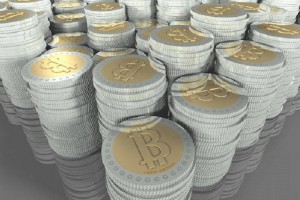Latest Posts
-
Finance 0
Market Risks That Wall Street Is Overlooking
The stock market just keeps on rising, and has been on that course (overall) for almost 10 years now. New records are set almost daily, and while this looks good on the surface, high valuations, soaring debt levels, and geopolitical uncertainty are all lurking down below. Today’s article was inspired by an interview I recently read on Business Insider, which discussed Wall Street concerns with the head of First Eagle Global Value Fund. Lately, the firm (whose fund is up 8.5% year-to-date) has been much more cautious than the typical Wall Street firm and when asked why, these were just a few of the reasons they gave… 1) An Absence...On December 5, 2017 / By Kurt Osterberg -
Finance 0
Sensex Finishes Marginally Lower; Bharat Forge Rallies 3.3%
Indian share markets continued to trade below the dotted line in the afternoon session and finished marginally lower as the RBI monetary policy panel starts its two-day meeting. At the closing bell, the BSE Sensex closed lower by 67 points and the NSE Nifty finished lower by 10 points. The S&P BSE Mid Cap finished up by 0.6% while S&P BSE Small Cap finished flat. Losses were largely seen in metal sector, capital goods sector, and power sector. Asian stock markets finished broadly lower today with shares in Hong Kong leading the region. The Hang Seng is down 1.01% while Japan’s Nikkei 225 is off 0.37% and China&#...On December 5, 2017 / By Kurt Osterberg -
Finance 0
Snap Upgraded To Overweight From Equal Weight At Barclays
Barclays analyst Ross Sandler upgraded Snap (SNAP) to Overweight from Equal Weight and raised his price target for the shares to $18 from $11. The stock closed yesterday down 30c to $13.57. With the company’s pricing transition in the later stages, Snap may start hitting or exceeding consensus revenue estimates and accelerating growth in 2018, Sandler tells investors in a research note. He thinks the investor narrative in 2018 can change from Facebook (FB) “is killing” Snap to “these companies can co-exist” like Priceline (PCLN) and Expedia (EXPE). Further, Sandler highlights Snap’s high short interest re...On December 5, 2017 / By Kurt Osterberg -
Finance 0
Fear Will Drive Oil Prices Higher In 2018
Oil prices are governed by cycles, and recent indications are that we are moving back into a cycle that will be governed by fear of insufficient oil supplies. The price of oil has always been driven by cycles of fear and complacency. During the cycle of fear, geopolitical events can send the price of oil soaring. During the cycle of complacency, oil prices will fall on bad news (e.g., the appearance of too much supply or weakening demand), but often seem immune to bullish news. Over the past decade, the world has experienced both cycles. The Cycle of Fear A decade ago “peak oil” was helping drive the fear cycle, as many credible voices as...On December 5, 2017 / By Kurt Osterberg -
Finance 0
Two Bar Reversal Delivers On Aussie Cross Pairs
One of my favorite candle patterns when trading forex is a pattern that occurs and recurs on all time frames, and it is the two bar reversal, which when complete can deliver a correction of the trend, herald the start of a breakaway from congestion, and even a full-blown reversal. This pattern can also be given added impetus if it appears ahead of a significant item of fundamental news, particularly if the release reinforces the pattern’s technical set up on the chart. Put simply, a two bar reversal occurs when we have two similar size candles, one up and one down (or vice versa), and when overlaid create either a classic shooting star or h...On December 5, 2017 / By Kurt Osterberg -
Finance 0
Stop Searching For The Holy Grail
In a recent post, I came to the following conclusion: “the notion that simply ‘following the trend’ in Gold will lead to vast riches is a false one.” I made this statement after analyzing a simple trend following system (going back to 1975), using the 200-day moving average as a signal of when to get in (closes above it) and when to get out (closes below it). The most common response to the post: “You’re using the wrong moving average. You need to use the x-day moving average for Gold. That is the one that works.” Translation: I should have used the Holy Grail. The only problem: it doesn’t exist. In testing other popular movin...On December 5, 2017 / By Kurt Osterberg -
Finance 0
There’s (Still) Deflation In Hyperinflation Forecasts
Is it just me or has there been a resurgence in the number of people who worry about hyperinflation? I don’t engage in these conversations too often anymore because they’re almost always the same. That conversation usually goes something like this: Inflationista: The government has destroyed our purchasing power by printing too much money! CR: You know, the US government doesn’t really print money in any meaningful sense (see myth #1). Inflationista: Yeah, but how do you explain why our living standards are collapsing and the value of the dollar is cratering? CR: The dollar has fallen in real terms, but median wages are up 32% since 19...On December 5, 2017 / By Kurt Osterberg -
Finance 0
The Cost Basis Of Our Economy Is Spiraling Out Of Control
What will it take to radically reduce the cost basis of our economy? If we had to choose one “big picture” reason why the vast majority of households are losing ground, it would either be the stagnation of income or the spiraling out of control cost basis of our economy, that is, the essential foundational expenses of households, government, and enterprise. Clearly, both rising costs and stagnating income cause households to lose ground, i.e. their income buys fewer goods and services every year. I’ve often covered the dynamics of stagnating income for the bottom 95%, and real-world inflation, i.e. a decline in purchasing...On December 5, 2017 / By Kurt Osterberg -
Finance 0
Asian Markets Stall On Mixed Data
Asian stock markets were mixed on Tuesday following a choppy session in New York on Monday and after news that the Reserve Bank of Australia kept its cash rate stable at its December policy meeting. On Wall Street, the technology sector struggled on Monday, falling 1.9 percent and causing the benchmark S&P 500 to close lower. Investors are now looking towards bank and retail stocks which are expected to benefit the most from the proposed tax bill in the U.S. Some analysts, however, aren’t worried about the Monday’s tech decline, citing the need to rotate strong indexes in order to keep the bull market alive. Japan’s Nikkei 225 index...On December 5, 2017 / By Kurt Osterberg -
Finance 0
Will Dividends Or Interest Boost My Retirement Savings More?
In a well-diversified portfolio, you normally have three different type of earnings — appreciation, dividends, or interest. “Appreciation” is the growth in the value of your investment based on the market going up. Income investors receive “dividends” or “interest” on their investments. INTEREST Interest is what you earn on money you lend out. For example, when you buy a corporate bond, you lend money to a company. When you buy a Treasury bond, you lend money to the U.S. government. These issuers then pay you interest, normally once every six months. When the bond matures, they pay you back the original value of the loan. DIVI...On December 5, 2017 / By Kurt Osterberg
Top Posts
-
 The Importance for Individuals to Use Sustainable Chemicals
The Importance for Individuals to Use Sustainable Chemicals
-
 Small Businesses: Finding the Right Candidate for the Job
Small Businesses: Finding the Right Candidate for the Job
-
 How to Write the Perfect Thank You Letter After Your Job Interview
How to Write the Perfect Thank You Letter After Your Job Interview
-
 3 Best Large-Cap Blend Mutual Funds For Enticing Returns
3 Best Large-Cap Blend Mutual Funds For Enticing Returns
-
 China suspected in massive breach of federal personnel data
China suspected in massive breach of federal personnel data















